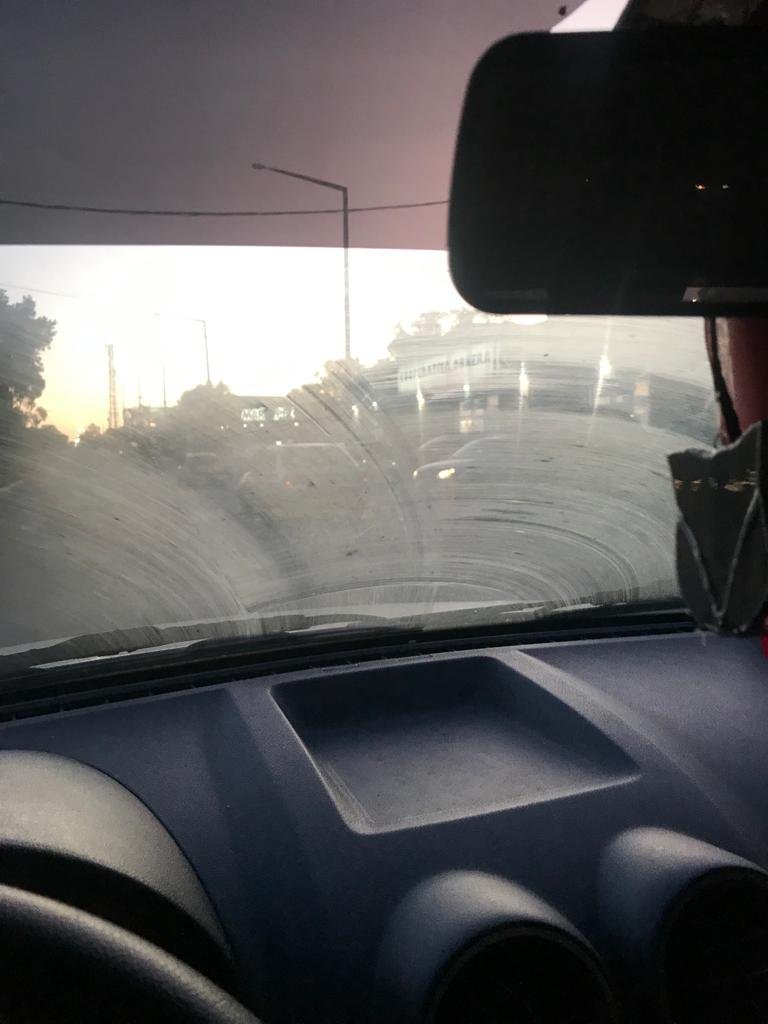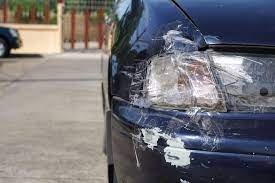The Atlanta Car Accident Lawyers at the Perazzo Law Firm understand that car accidents can stem from various factors. Yet, when drivers operate poorly maintained vehicles, the likelihood of accidents rises, along with the potential for liability. The attorneys in Georgia at the Perazzo Law Firm advise all drivers to ensure the following before hitting Florida’s roads:
- -Ensure the brake system is functioning properly.
- -Check that all belts are in good condition.
- -Verify that exterior lights are operational.
- -Ensure rear and sideview mirrors are intact.
- -Inspect tires for adequate tread and condition.
- -Confirm windshields are free of cracks that may impair visibility.
- -Ensure bumpers are secure.
- -Verify that doors close properly.
- -Check that wipers and defrosters are functioning.
- -Keep car windows clear of debris that obstructs visibility.
Following an accident, any vehicle maintenance issues can be used against the owner, regardless of fault. Insurance companies may use such issues to dispute claims or shift blame onto the vehicle owner. For instance, a cracked windshield or missing sideview mirror could be cited as contributing factors to an accident.
Faulty Brakes in Cars and Trucks: Risks, Accidents, and Prevention
Faulty brakes are a significant safety hazard for both cars and trucks, leading to potentially severe accidents. However, these risks can be mitigated through regular maintenance, the use of quality parts, and proper driver training. By taking proactive steps to ensure brake systems are functioning correctly, the chances of brake-related accidents can be greatly reduced, making the roads safer for everyone.
Brakes are one of the most critical safety components in any vehicle, including cars and trucks. Their primary function is to slow down or stop the vehicle by converting kinetic energy into heat through friction. However, when brakes are faulty, they can fail to perform this essential task, leading to dangerous situations on the road.
Faulty brakes can result from various issues, including worn-out brake pads, leaking brake fluid, malfunctioning brake calipers, or damaged brake lines. These problems can occur due to wear and tear, lack of maintenance, manufacturing defects, or improper installation.
Potential Accidents Due to Faulty Brakes
Faulty brakes significantly increase the risk of accidents, particularly in the following scenarios:
- Rear-End Collisions: One of the most common types of accidents caused by faulty brakes is rear-end collisions. When brakes fail, the driver may be unable to stop in time, resulting in a crash with the vehicle in front.
- Runaway Vehicles: In extreme cases, especially with heavy trucks, faulty brakes can lead to runaway vehicles. This occurs when the vehicle cannot stop or slow down on a descent, potentially causing catastrophic accidents, especially on steep roads.
- Intersection Accidents: Failing to stop at red lights or stop signs due to brake failure can lead to severe side-impact collisions at intersections, endangering both the vehicle occupants and other road users.
- Loss of Control: Faulty brakes can cause a driver to lose control of the vehicle, particularly if one side of the brakes fails, leading to a skid or spin. This loss of control is particularly hazardous at high speeds or on slippery surfaces.
- Multi-Vehicle Pile-Ups: In heavy traffic, brake failure can cause multi-vehicle accidents, as one vehicle’s inability to stop can trigger a chain reaction of collisions.
Prevention of Brake-Related Accidents
Preventing accidents related to faulty brakes involves a combination of regular maintenance, driver awareness, and proper vehicle handling. Here are some key preventive measures:
- Regular Brake Inspections: Vehicle owners should adhere to a regular brake inspection schedule. This includes checking brake pads, rotors, fluid levels, and other components for wear and damage. Professional inspections can identify potential issues before they lead to brake failure.
- Brake Fluid Maintenance: Brake fluid plays a crucial role in the hydraulic braking system. It’s important to check the fluid level regularly and ensure it’s free of contamination. If the brake fluid is low or degraded, it should be replaced according to the manufacturer’s recommendations.
- Immediate Attention to Warning Signs: Drivers should be alert to warning signs of brake problems, such as squeaking, grinding noises, a soft brake pedal, or the vehicle pulling to one side when braking. Any of these symptoms should prompt immediate inspection and repair.
- Use of Quality Brake Parts: When replacing brake components, using high-quality, manufacturer-recommended parts is essential. Cheap or substandard parts can fail prematurely, increasing the risk of accidents.
- Driver Training and Awareness: Drivers, especially those operating heavy trucks, should be trained in emergency braking techniques and understanding brake fade. Brake fade occurs when brakes overheat and lose effectiveness, which can happen during prolonged braking on steep descents.
- Emergency Brake Systems: Many modern vehicles, particularly trucks, are equipped with auxiliary braking systems, such as engine brakes or retarders, which can help slow down the vehicle in the event of brake failure. Understanding how to use these systems effectively can prevent accidents.
- Load Management in Trucks: Overloading trucks can put additional strain on the braking system, increasing the likelihood of brake failure. Proper load management and weight distribution are essential for maintaining braking efficiency.
Thus, maintaining roadworthy vehicles is vital for personal safety and that of others on Georgia roads. If you or a loved one has been involved in an accident due to vehicle neglect, it’s advisable to consult with a knowledgeable Personal Injury lawyer specializing in car accidents and insurance claims. In Atlanta, Jonathan Perazzo of the Perazzo Law Firm offers free initial consultations and takes pride in delivering top-notch legal representation.

Risks of Accidents Due to Driving with a Dirty Windshield and Ineffective Wipers
A clear and unobstructed view of the road is essential for safe driving. The windshield and wipers play a crucial role in maintaining this visibility. However, a dirty windshield combined with wipers that do not function properly can significantly compromise a driver’s ability to see the road clearly, increasing the risk of accidents.
Risks Associated with a Dirty Windshield

A dirty windshield can severely impair visibility for several reasons:
- Reduced Clarity: Dirt, dust, grime, and other debris on the windshield can create a hazy or foggy effect, particularly when light shines on it. This reduces the clarity of the driver’s view, making it harder to see the road, pedestrians, and other vehicles.
- Glare Issues: A dirty windshield can cause increased glare from the sun or oncoming headlights. The dirt particles scatter light, leading to temporary blindness, especially during dawn, dusk, or night driving. This can make it difficult to judge distances or identify potential hazards.
- Obstructed View: Larger debris like bird droppings, dead insects, or tree sap can obstruct a driver’s line of sight. If these spots are in the driver’s direct view, they can be distracting and make it difficult to focus on the road ahead.
- Inability to Spot Hazards: A dirty windshield can hide small but critical details on the road, such as potholes, small animals, or debris. It can also make it difficult to see road signs or signals, leading to missed turns or unintentional traffic violations.
Risks Associated with Ineffective Wipers
Windshield wipers are designed to clear away rain, snow, and debris, ensuring that the windshield remains clean and visibility is maintained. However, wipers that don’t wipe well can lead to several risks:
- Streaking and Smearing: Worn-out or damaged wiper blades can leave streaks or smears on the windshield, which further impair visibility. This is especially dangerous in wet or snowy conditions when clear vision is most needed.
- Incomplete Clearing: Ineffective wipers may not completely clear the windshield, leaving patches of water or debris. These patches can distort the driver’s view and create blind spots, increasing the risk of missing critical details on the road.
- Increased Reaction Time: A compromised view due to ineffective wipers forces the driver to take extra time to interpret what they see. This delayed reaction time can be the difference between avoiding an accident and being involved in one.
- Difficulty in Heavy Rain: In heavy rain, ineffective wipers can struggle to keep up with the volume of water hitting the windshield. This can lead to a situation where the driver is almost driving blind, especially at higher speeds.
Potential Accidents Due to Poor Windshield Visibility
Driving with a dirty windshield and ineffective wipers can lead to several types of car accidents in Atlanta:
- Rear-End Collisions: A driver with impaired visibility may fail to notice a slowing or stopped vehicle ahead, leading to a rear-end collision.
- Side-Swipe Accidents: Difficulty in seeing the road markings or other vehicles in adjacent lanes can result in side-swipe collisions, especially during lane changes.
- Intersection Accidents: Poor visibility can cause a driver to miss traffic signals, stop signs, or other vehicles at intersections, increasing the likelihood of T-bone or side-impact collisions.
- Pedestrian and Cyclist Accidents: Pedestrians and cyclists, being smaller and more vulnerable, are particularly at risk when a driver’s view is impaired. A dirty windshield can cause a driver to overlook them, leading to potentially fatal accidents.
- Off-Road Accidents: Reduced visibility can make it difficult for the driver to stay within their lane, particularly on narrow or winding roads. This can result in the vehicle drifting off the road, potentially causing rollovers or collisions with obstacles.
Prevention Measures
To prevent accidents related to poor windshield visibility, drivers should take the following measures:
- Regular Windshield Cleaning: Drivers should ensure their windshields are clean at all times. This includes cleaning both the inside and outside surfaces regularly to remove dirt, grime, and streaks.
- Wiper Blade Maintenance: Wiper blades should be inspected regularly for signs of wear and tear, such as cracks, stiffness, or missing rubber. They should be replaced as soon as they show signs of inefficiency.
- Use of Quality Wiper Fluid: Quality wiper fluid helps to remove stubborn dirt and debris that water alone cannot. It can also prevent the windshield from freezing over in cold conditions.
- Avoiding the Use of Damaging Substances: Drivers should avoid using products that can leave residue on the windshield, such as waxes or certain cleaning agents. These can create streaks and reduce clarity.
- Immediate Response to Visibility Issues: If visibility becomes compromised due to a dirty windshield or malfunctioning wipers while driving, it’s crucial to pull over safely and address the issue before continuing.
- Proper Lighting Use: During low visibility conditions like fog or heavy rain, drivers should use the appropriate lights to improve their visibility and make their vehicle more visible to others.
A dirty windshield and ineffective wipers can significantly compromise a driver’s ability to see the road, leading to an increased risk of accidents. Regular maintenance and proactive care of both the wind
Contact us now for a complimentary consultation and zero out-of-pocket fees for clients.
RELATED TOPICS
Why do Personal Injury Lawyers have a Bad Reputation? / Hiring a Personal Injury Lawyer in Atlanta / Car Accident Injuries in Macon / Causes of Car Accidents / Miami Truck Accident Lawyer / What happens if my car is stolen & involved in an accident? / High Speed Chase Accidents / Drunk Driving Accidents / Why do People Drive without Insurance / Out of Control Vehicle Accidents / Uninsured Motorist Coverage (UM) / Stolen Vehicle Accident Claims / UBER Accident Lawyer in Miami / Do I need a Car Accident Lawyer for Minor Injuries?

